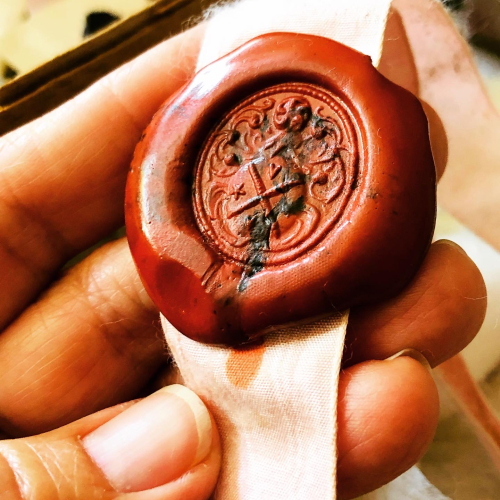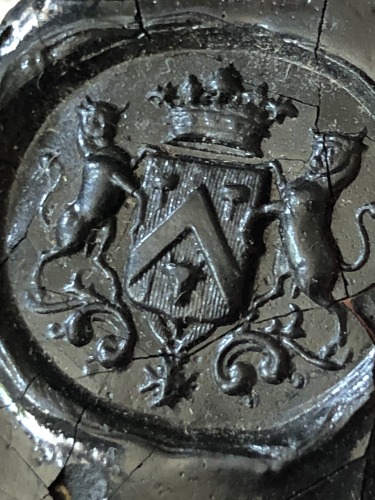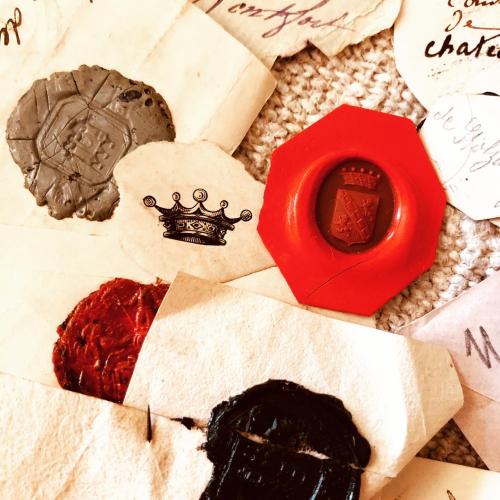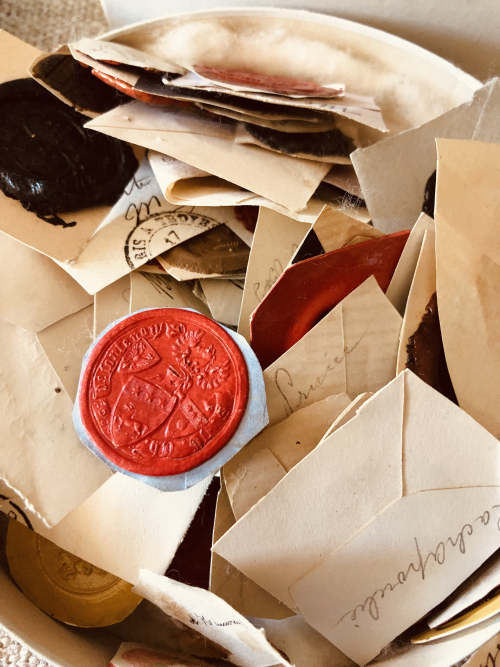Great guess and a wonderful collection of names. Some of you guessed more than one time and that is okay. The baby's name was mentioned but I am not allowed to reveal it until the baby's birth.
I cannot say much about the names you sent me because if I do it would be giving you clues to the name. Does that make sense? I cannot say if I liked certain names, or if any of you guessed the same name I did…
Thank you for your guesses!
_____
On another note, I bought a box full of seals, and when I got home the box full represented 500 seals!
Most of the antique seals were red and black but also pink, white, silver, gold, green, yellow…
-
"… in France, different colored waxes were used for different occasions:
- White for communication relating to weddings
- Black for obituaries
- Violet for sympathy
- Chocolate for dinner invitations
- Red for business
- Ruby for engaged lovers’ letters to one another
- Green for letters from lovers who live in hopes
- Brown for refusals of marriage offers.
- Blue denotes constancy
- Yellow jealously
- Pale green reproaches
- Pink used by young girls
- Grey used between friends…"
I have seen all of these colored used.
I will try to show them in the days to come.
"In the Middle Ages, sealing wax was typically made of beeswax and "Venice turpentine",
a greenish-yellow resinous extract of the European Larch tree.
The earliest such wax was uncolored; later the wax was colored red with vermilion. …
In some situations, such as large seals on public documents, beeswax was used.
Examine the material from which the old wax seal is made.
The wax seal, or stamp, is called the "matrix."
It forms the "impression" that is the actual imprint on the wax.
Old seal makers are made of natural materials, such as lead, bronze, gold, bone, or ivory.
Measure the diameter of the wax seal matrix.
The original version of wax seals dates back to early civilizations in the Indus Valley and Mesopotamia—
meaning they're even older than pen and paper!
These early seals didn't actually use wax. Instead, people used rings or cylinders to press their seals into clay tablets.
More about the history and reason behind seals
https://www.victorianpassage.com/2009/07/unfolding_the_mysteries_of_sea/
What would your seal have on it?
"Animals were the most common type of symbol used in association with heraldic shields.
They were used to represent the defining trait or quality of the owner of the coat of arms.
The antelope, for instance, represented the peace and purity of the owner.






Leave a Reply